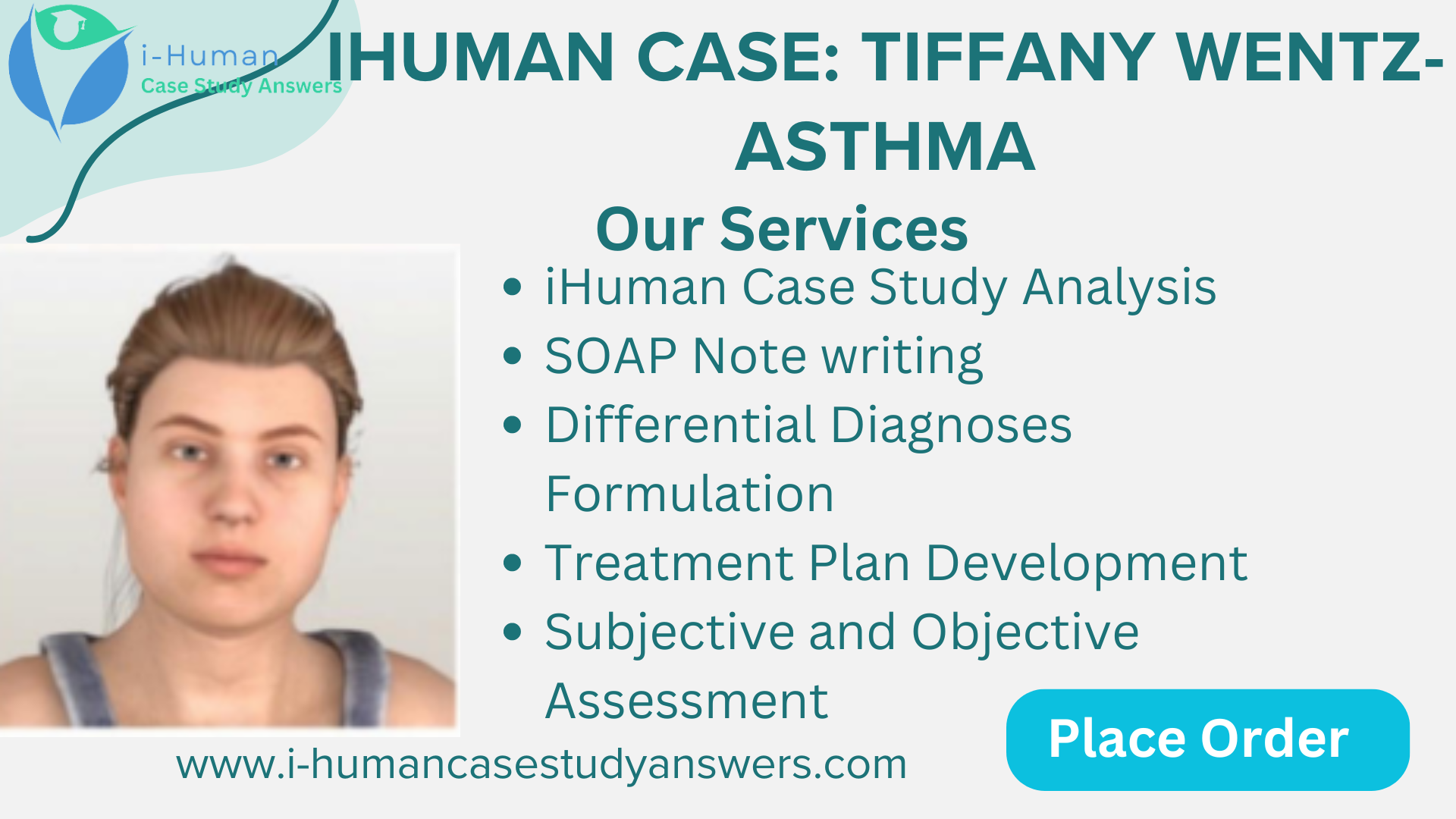Asthma case studies, like the one featuring Tiffany Wentz on iHuman, often present complex scenarios that challenge students to apply their knowledge and critical thinking skills. Understanding how to approach these cases effectively is essential for success in nursing education. This article explores strategies for mastering asthma case studies on iHuman and provides valuable tips to help students navigate through them with confidence.
Introduction
Asthma is a chronic respiratory condition characterized by airway inflammation, bronchoconstriction, and airway hyperresponsiveness. Before delving into asthma case studies, it is crucial to have a solid understanding of the pathophysiology of asthma. This article aims to provide nursing students with a comprehensive guide to approaching asthma case studies on iHuman, focusing on understanding the pathophysiology, gathering relevant patient information, performing a thorough assessment, developing a differential diagnosis, formulating a treatment plan, monitoring and evaluating patient responses, and practicing effective communication skills.
Understanding the Pathophysiology
Asthma involves complex interactions between genetic, environmental, and immunological factors that result in airway inflammation and hyperreactivity. Reviewing key concepts such as the role of inflammation, the importance of bronchodilators, and common triggers is essential before tackling asthma case studies.
Gathering Relevant Patient Information
In the case of Tiffany Wentz, gather all pertinent patient information, including medical history, presenting symptoms, and potential triggers. Pay attention to details such as symptom frequency, severity, past treatments, and the impact of asthma on daily life.
Performing a Thorough Assessment
Conduct a comprehensive assessment of Tiffany’s respiratory status, including lung sounds, respiratory rate, oxygen saturation, and overall respiratory effort. Document assessment findings accurately and consider their implications for diagnosis and treatment.
Developing a Differential Diagnosis
Based on Tiffany’s symptoms and assessment findings, formulate a differential diagnosis that includes other respiratory conditions with similar presentations. Prioritize diagnoses based on likelihood and relevance to the case.
Formulating a Treatment Plan
Develop a comprehensive treatment plan addressing acute symptom management and long-term asthma control. Consider pharmacological and non-pharmacological interventions tailored to Tiffany’s needs.
Monitoring and Evaluating
Monitor Tiffany’s response to treatment and adjust the plan as necessary. Document changes in symptoms, medication efficacy, and adverse reactions to evaluate the effectiveness of interventions.
Practicing Effective Communication
Communicate clearly and empathetically with Tiffany and her family, providing education on asthma management, medication adherence, and trigger avoidance strategies.
SOAP Note: iHuman Case – Tiffany Wentz – Asthma
S (Subjective)
- Presenting Complaint: Tiffany Wentz, a 22-year-old female, complains of worsening shortness of breath, wheezing, and chest tightness for the past few hours.
- Severity: The shortness of breath is described as moderate and worse with exertion. Wheezing is audible and bothersome. Chest tightness is described as a constricting sensation.
- Associated Symptoms: Tiffany reports cough (productive or non-productive, depending on the iHuman case design) and mild fatigue.
- Denies: Fever, nausea, vomiting, chest pain.
- Past Medical History: Diagnosed with asthma since childhood. Uses an albuterol inhaler for occasional symptoms (unavailable in some iHuman case formats).
- Medications: Not currently taking any medications (aside from the inhaler as mentioned in past medical history). However, information on regular asthma medication use (inhalers or controllers) might be available in some iHuman case formats.
O (Objective)
- Vital Signs:
- Might not be available in this iHuman case study. If available, note:
- Respiratory rate: Might be elevated (>20 breaths per minute) if experiencing shortness of breath.
- Oxygen saturation (SpO2): Ideally above 94%, but might be lower if Tiffany is having a significant asthma exacerbation.
- Might not be available in this iHuman case study. If available, note:
- Physical Exam (if applicable within the iHuman case platform):
- Limited due to the simulated nature of the case. However, if possible, focus on:
- Respiratory System: Look for use of accessory muscles for breathing and observe chest wall movement (may be restricted during an asthma exacerbation). Auscultate the lungs for wheezing throughout the respiratory cycle.
- Limited due to the simulated nature of the case. However, if possible, focus on:
A (Assessment)
- Differential Diagnoses:
- Asthma exacerbation (most likely): The constellation of worsening shortness of breath, wheezing, and chest tightness in someone with a history of asthma is highly suggestive of an asthma exacerbation.
- Acute bronchitis: This can cause cough, wheezing, and chest tightness, but typically without a history of asthma.
- Pneumonia: Less likely in this case due to the absence of fever (if not reported), but pneumonia can cause cough, shortness of breath, and chest tightness.
- Anxiety: Anxiety can cause shortness of breath and chest tightness, but typically not wheezing.
- Working Diagnosis: Based on the presenting complaint and history of asthma, the working diagnosis is asthma exacerbation.
P (Plan)
- Further Investigations (within the iHuman case limitations):
- Consider asking the iHuman about peak flow meter readings (if applicable within the simulation) to assess lung function.
- Management (applicable options within the iHuman case simulation):
- Recommend use of the albuterol inhaler (if mentioned in history) following appropriate guidelines for puffs and frequency (specific details on inhaler use might be limited in the iHuman case).
- Advise monitoring symptoms and seeking immediate medical attention if wheezing worsens, shortness of breath becomes severe, or if she experiences chest pain, fever, or blueish discoloration of the skin (signs of a life-threatening asthma attack).
- Education:
- Educate Tiffany on recognizing asthma triggers and proper inhaler technique (if inhaler use is simulated).
- Discuss the importance of using controller medications as prescribed (if medication history is available in the iHuman case).
- Disposition: Depending on the iHuman case format, the plan might involve recommending a follow-up visit to monitor her response to treatment.
Note: This SOAP note is based on the information provided in the iHuman case scenario “Tiffany Wentz – Asthma.” The absence of certain findings due to the simulated nature of the case might limit the assessment.
Did you enjoy our articles?
Click the order button below to get a best grades in your I-human module.
You can talk to the writer using our messaging system and keep track of how your assignment is going.
Order Now


